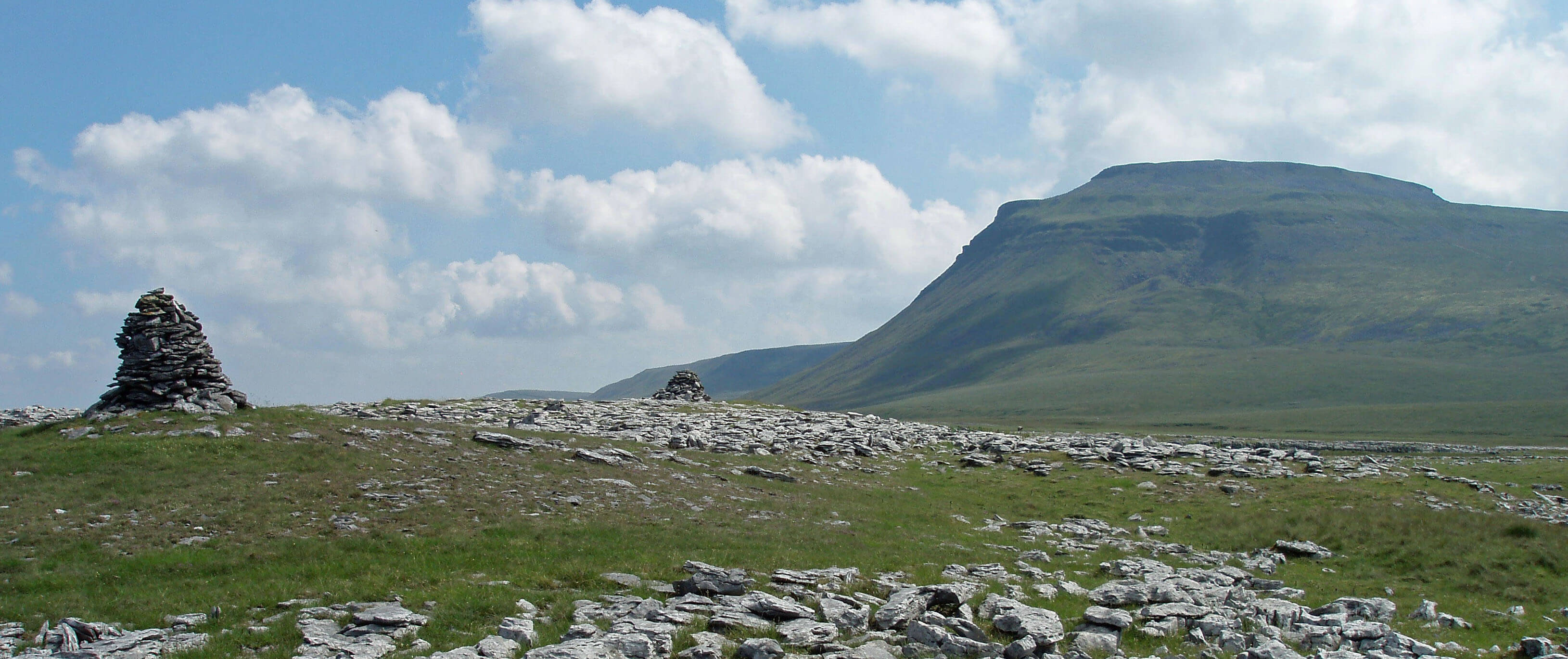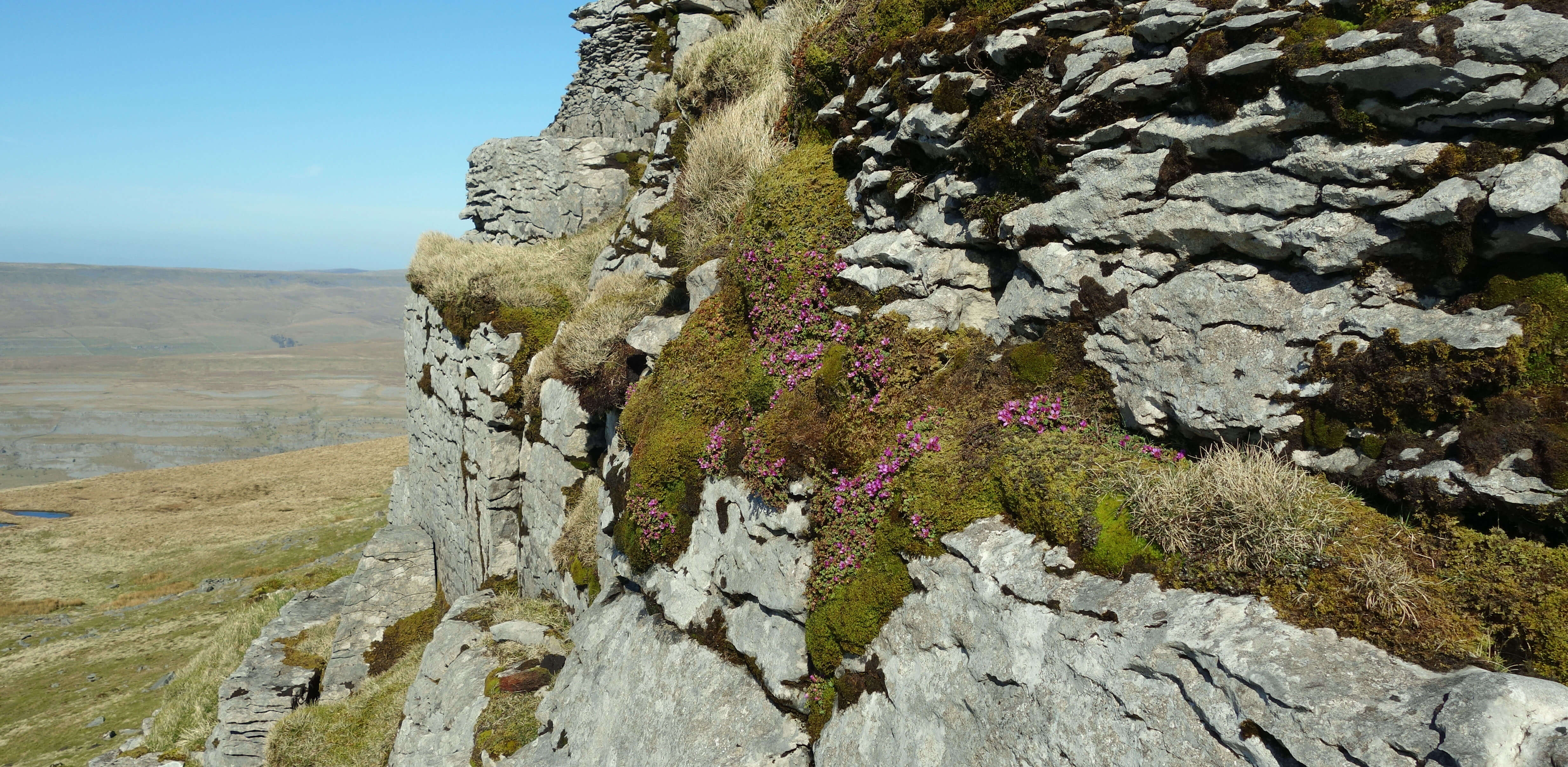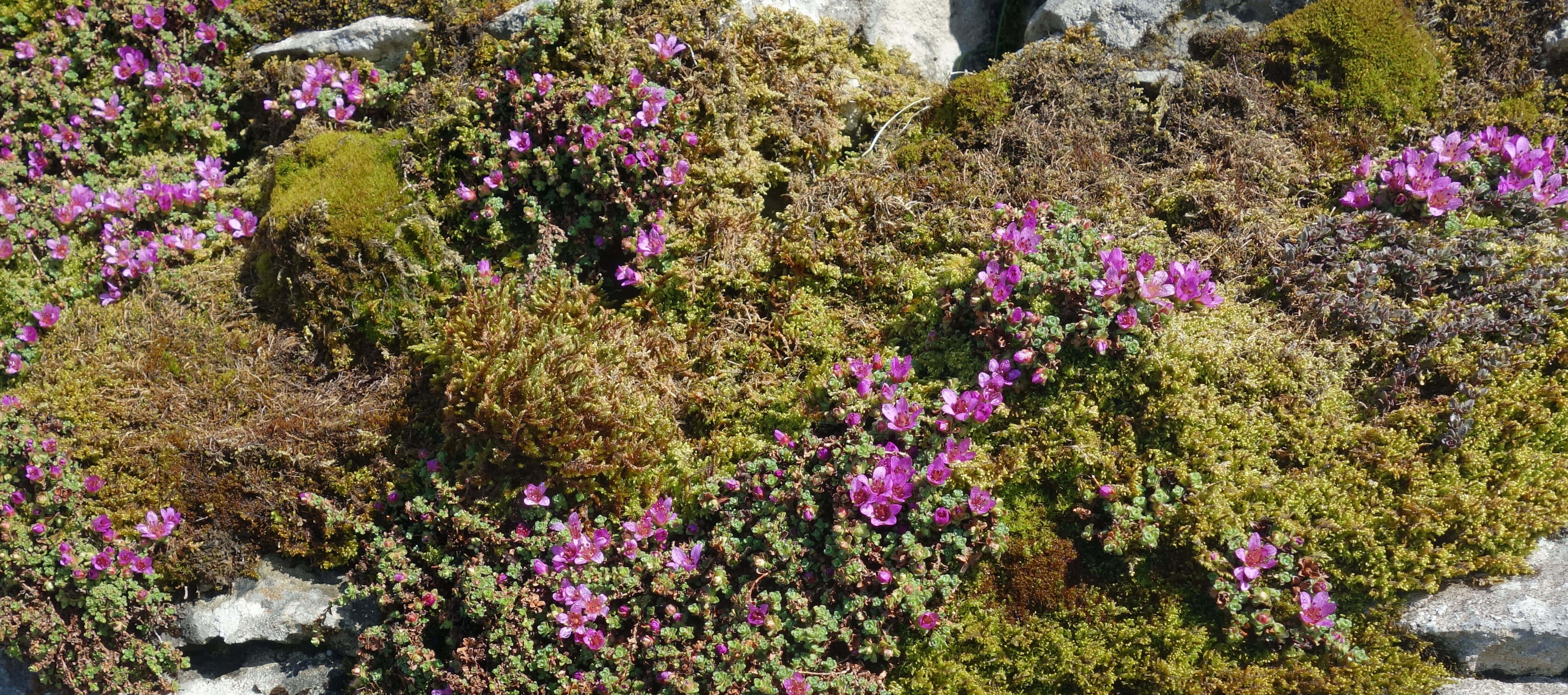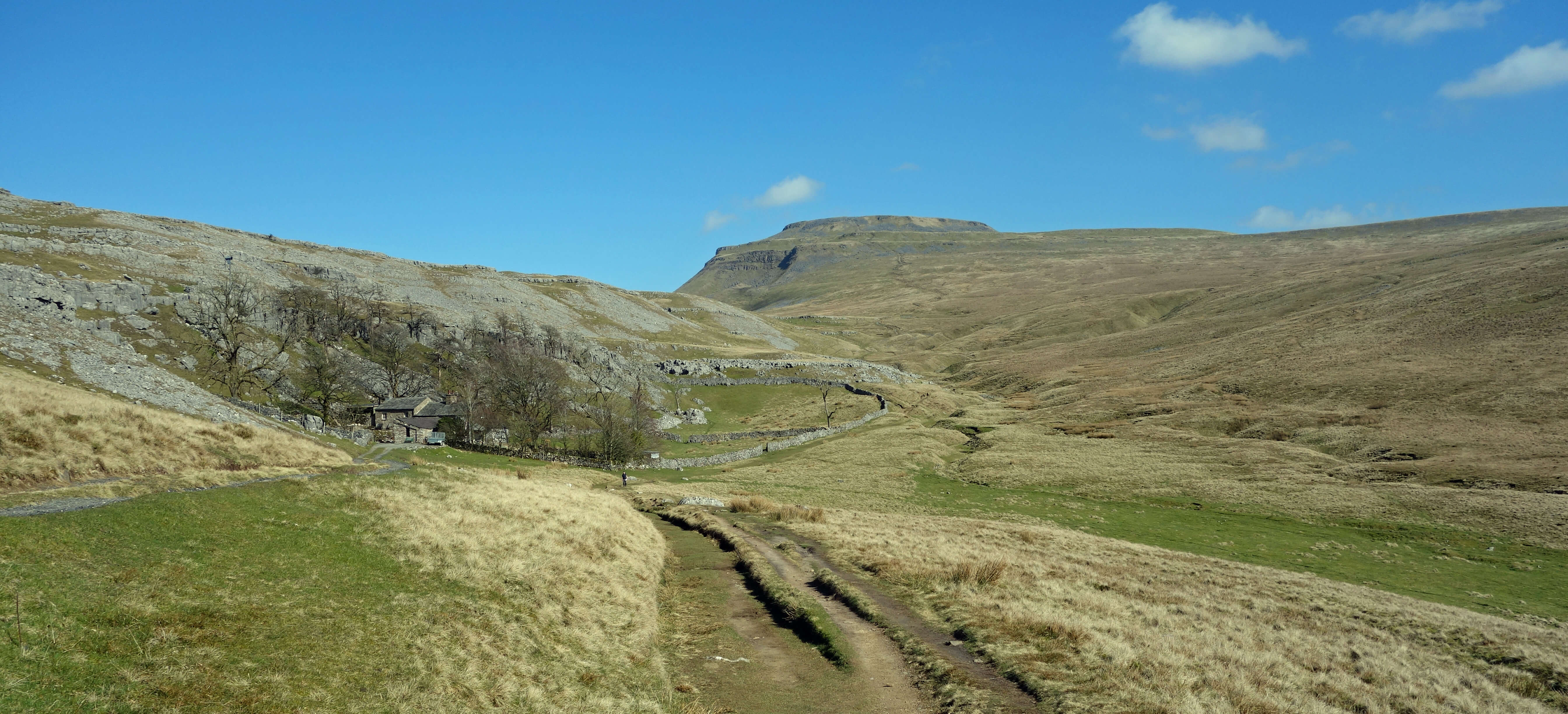

Home Preamble Index Areas Map References Me Drakkar

Little Ingleborough, with Ingleborough ahead
Unfortunately, I found that my hill-walking fitness, such as I had, had evaporated in the last 2½ years and the walk up Little Ingleborough proved a long slog for me. A snack revitalised me sufficiently to manage the final 84 metres up to the top of Ingleborough (723 metres). I wandered around the summit plateau, as you do, peering over the edges in all directions but although it was a sunny day with little breeze there was too much haze for perfect long-distance views. On this occasion, I took particular notice of the great mound of stones on the south-west edge. This is due to an initiative by one Hornby Roughsedge (great name!) (1786–1834 or so) of Bentham House. The story was told by Joseph Carr (1812–1899), a historian of Bentham and Ingleton, in the Lancaster Guardian of May 15, 1897, describing events of 1830 (Carr, 1997). He wrote“The Hospice Tower … was the proposed heading of the new building indicating that the erection was to be of general benefit to all tourists and the public generally who might ascend the venerable mountain. It was a matter which interested all the neighbouring villages, hamlets and even persons living in more distant towns … While some persons looked upon it as a wild goose chase, which was sure to prove a failure, others thought that a tower on Ingleborough would not only be an attraction to mountain climbers but a convenience in which they might rest and take their portable refreshments. Though the lords of the manor might use the Tower as a shooting box, still it was well understood that it would always be accessible to the public … When the building was near completion great preparations were made for its opening. The promoters of the Tower decided to make it a memorable event and a historical record.With that sobering thought … (Actually, my thought (which perhaps I shouldn't express) is that we should raise a glass to the drunken revellers. The top of Ingleborough is no place for a rich man’s folly. A tower there would ruin the natural, noble profile of Ingleborough, the most iconic image of the Yorkshire Dales.) … I walked down the path that leads to Ingleton but soon left it to search for purple saxifrage.
The opening took place in the summer, and the day proved auspicious for the opening. People from every quarter of the compass were on their way from the two Benthams, Ingleton, and the neighbouring villages … The chief features of the day were feasting, racing, drinking, and at night drunkenness, and mischievous rowdiness. The tower was a circular and substantial building with a dome roof. A round stone table for refreshments was fixed to the centre. The door and windows were made of strong material on account of the terrible winds which sweep over the summits plain … To human appearance it looked as if it would resist the winter storms for ages with occasional repairing. The memorable event took place with great rejoicing and much shouting.
Mr Roughsedge and friends left for home some time before the drunken rows began and the work of mischief was completed. Thus drink and rowdyism inflicted ruin and desecration on an ornamental and useful building which had been put up at great expense and much labour … The great mischief done at the close of the memorable gala so grieved and annoyed Mr Roughsedge and the friends … that they would undertake no repairs, so that in the course of a few years it became a mass of ruins … The ruins lie in a heap near the south-west of the mountains edge and within sight of all the villages and towns westward as far as Lancaster and Morecambe as a monument of the sad effects of intoxicating drinks.”

Ingleborough, without its tower (photo taken on a previous occasion)
 Purple saxifrage is an Arctic-Alpine plant. It flowers higher (at 4,505 metres) and at a more northerly point (at 83°N) than any other plant. It flowers earlier than other mountain plants, often poking through snow, and is therefore a welcome sign of spring to those living at high altitudes and northerly latitudes – and to me. On Ingleborough it is a remnant of the immediate post Ice Age period and survives only on cliff faces out of reach of sheep’s mouths and walkers’ boots. It also occurs on Pen-y-ghent and, I expect, on some Cumbrian mountains.
Purple saxifrage is an Arctic-Alpine plant. It flowers higher (at 4,505 metres) and at a more northerly point (at 83°N) than any other plant. It flowers earlier than other mountain plants, often poking through snow, and is therefore a welcome sign of spring to those living at high altitudes and northerly latitudes – and to me. On Ingleborough it is a remnant of the immediate post Ice Age period and survives only on cliff faces out of reach of sheep’s mouths and walkers’ boots. It also occurs on Pen-y-ghent and, I expect, on some Cumbrian mountains.
Below: Purple saxifrage on Ingleborough; Above right: Purple saxifrage in location on the limestone cliffs.


Crina Bottom and Ingleborough
Home Preamble Index Areas Map References Me Drakkar
© John Self, Drakkar Press, 2018-

Top photo: The western Howgills from Dillicar; Bottom photo: Blencathra from Great Mell Fell